Financial knowledge exercise will choose up once more this week, culminating within the report on Friday. Moreover, NVIDIA’s (NASDAQ:) midweek earnings, which have develop into a major market-moving occasion in latest quarters, may even be in focus.
Friday additionally introduced some surprises, with the survey displaying that long-run inflation expectations rose to three.5% in February—the very best studying since 1995.
That is actually not an encouraging quantity, given the place we’re within the cycle and the continued narrative that inflation expectations stay effectively anchored.
It’s not simply shoppers—market-based inflation expectations have additionally risen sharply, with the 2-year inflation swap breaking via a key resistance area between 2.6% and a couple of.7%. The Fed can also be taking discover, with St. Louis Fed President Albert Musalem noting that this might make the Fed’s job tougher.
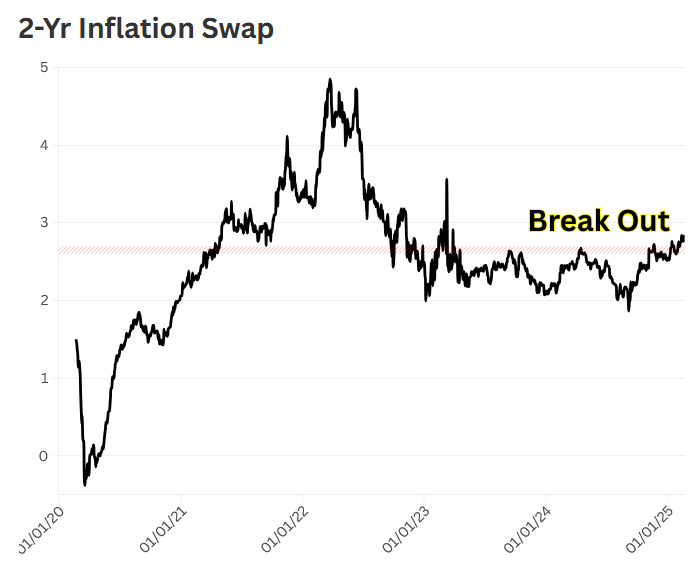
This week’s PCE report seemingly gained’t have a lot impression until it delivers a major shock, both increased or decrease. The market has largely priced in an inline quantity.
The principle threat is that the market has miscalculated one thing, however for probably the most half, analysts have completed a very good job of precisely pricing the PCE report prior to now.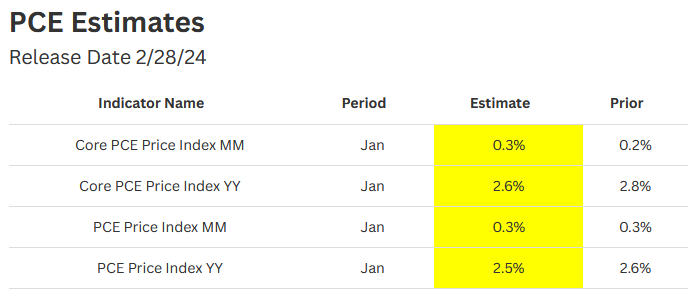
Regardless of this, bond yields fell sharply on Friday. The S&P International PMI knowledge was weak, suggesting a major slowdown in February development.
The report additionally highlighted wage pressures and better costs within the manufacturing sector. As prices rise, the providers sector seems in danger for margin compression, however corporations hesitate to move them on. This knowledge resembled mid-week experiences from the Empire State and Philly Fed surveys.
That makes this week’s survey knowledge notably essential—if the traits seen within the Philly Fed and Empire State surveys proceed within the Dallas Fed, Richmond Fed, and Kansas Metropolis Fed experiences, it might be trigger for concern.
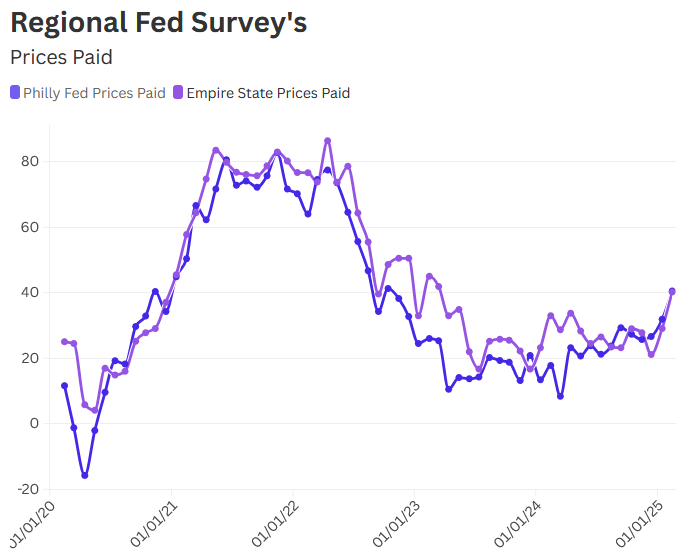
Surprisingly, the bond market’s response steered an financial slowdown, probably attributable to increased costs and slowing development. It’s laborious to say at this level, as survey knowledge on the general financial system isn’t at all times dependable.
Nonetheless, the inflation knowledge tends to be fairly correct. Until there’s a slowdown within the job market, I imagine the financial system will stay wholesome. If the job market have been slowing, wage pressures seemingly wouldn’t be a priority, as famous within the PMI report on Friday.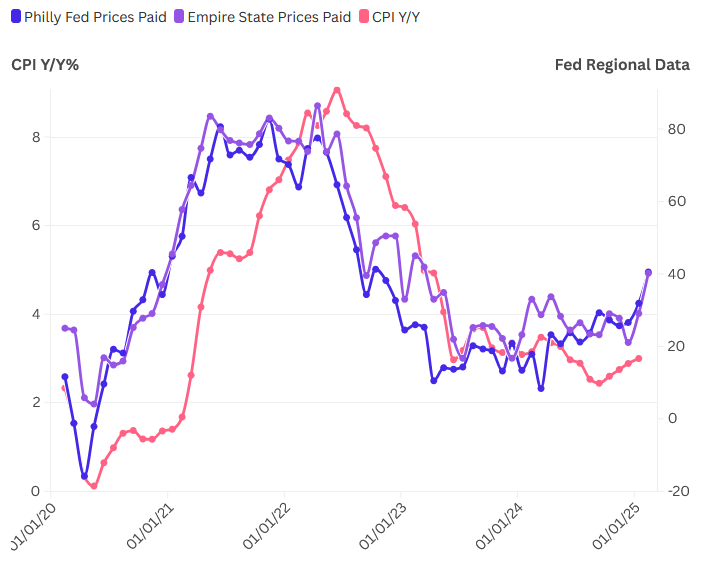
The continues to search out assist across the 4.4% area—the 61.8% retracement degree. That is important; if damaged, the yield may slip additional, probably again to the 4.15% area. Nonetheless, given rising inflation expectations, I don’t suppose the 10-year charges will seemingly fall a lot additional until the market thinks increased inflation will trigger a recession.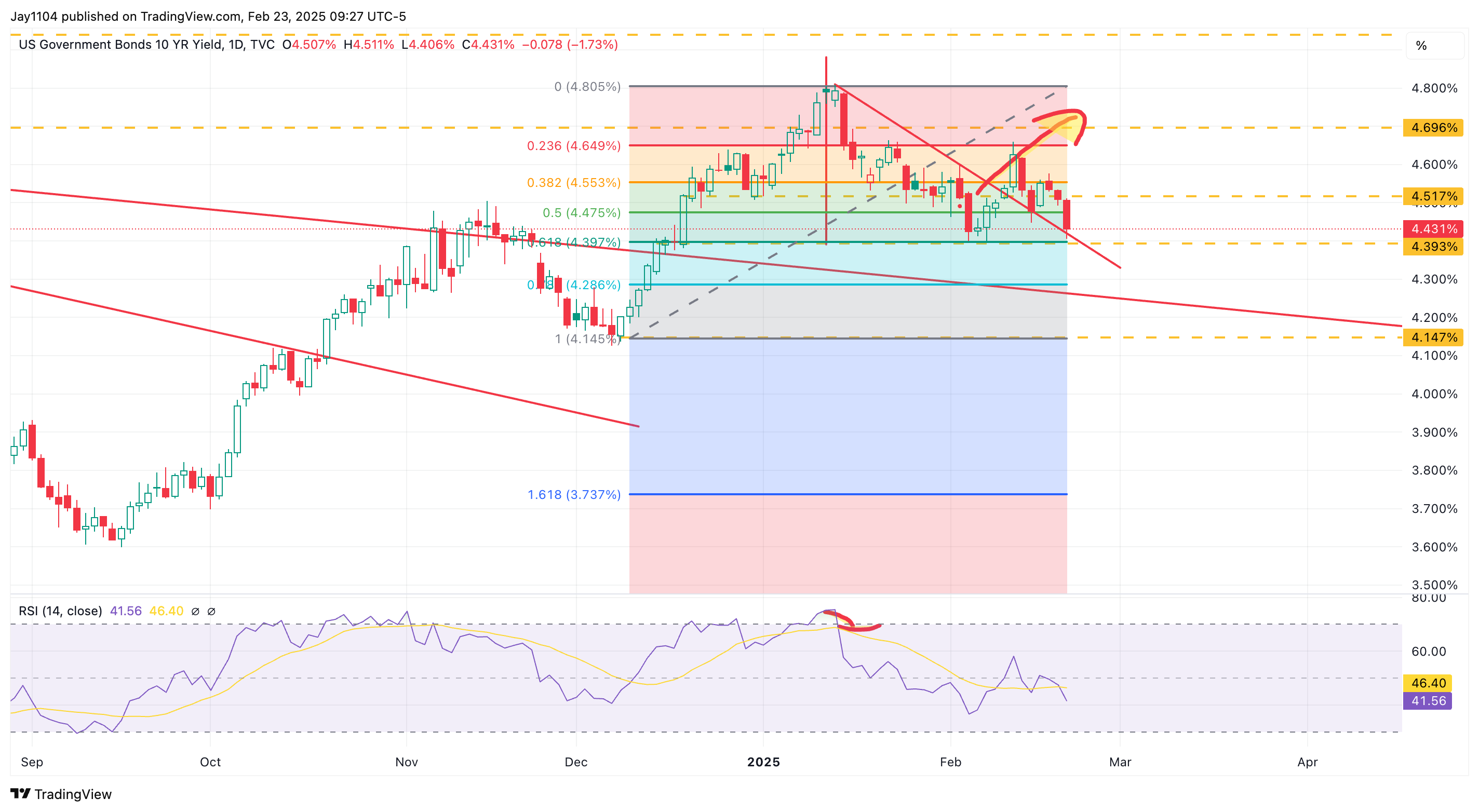
We additionally noticed a major improve in on Friday, rising to round 18, which may give the market a considerable enhance on Monday morning, at the least on the open.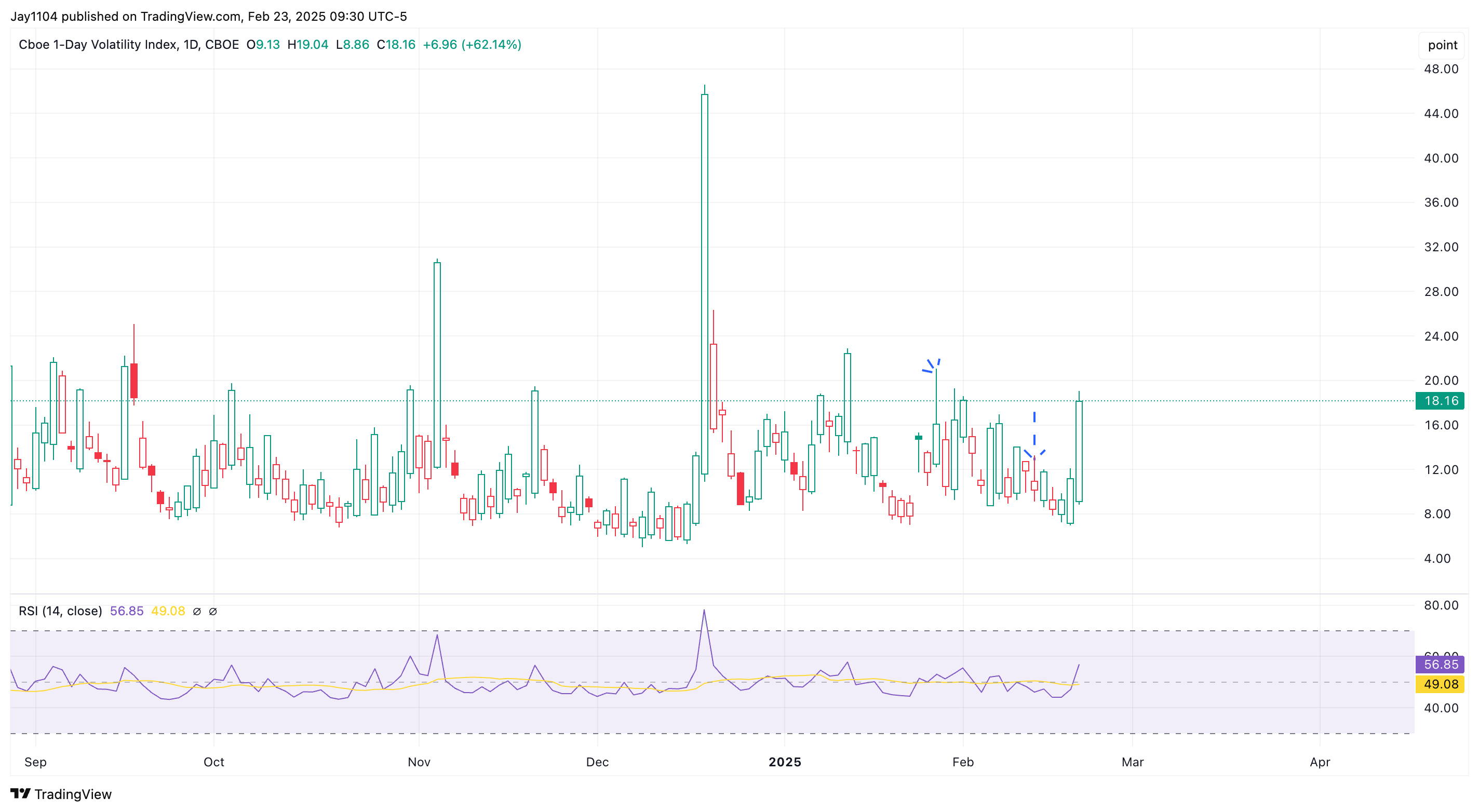
One ignored occasion this weekend that might have despatched US yields decrease and the 1-Day increased is the German election, as buyers appeared for security and hedges. Anybody in Europe is aware of it is a important election, and its outcomes may have a profound impression on the continent and the way the market is pricing threat.
Credit score spreads have tightened materially, notably between German and Italian 10-year yields. Often, this contraction could be seen as a constructive and, most significantly, a risk-on sign.
Nonetheless, I’m unsure that’s what’s taking place on this case. As a substitute, it appears extra like an indication of nervousness within the bond market and concern over the election’s potential impression on the German financial system.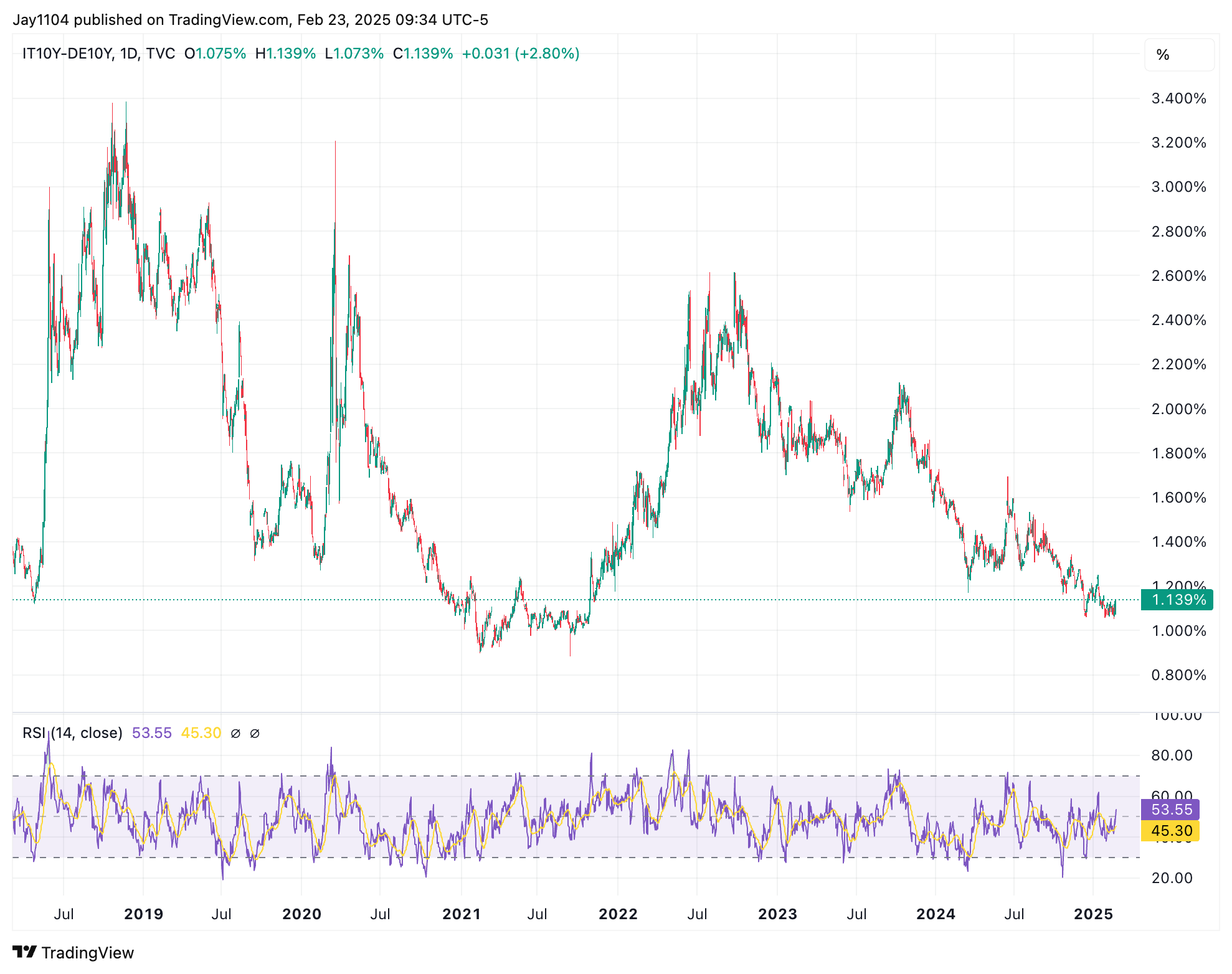
When inverting the chart and overlaying it with the unfold above, it’s pretty simple to see that the index and unfold are partially aligned. This additionally explains how the tightening of the credit score unfold might be mistaken for a risk-on state. Nonetheless, we gained’t know for positive till after the election—if the outcomes are higher than feared, the unfold may very well begin to widen once more as issues over the German financial system ease.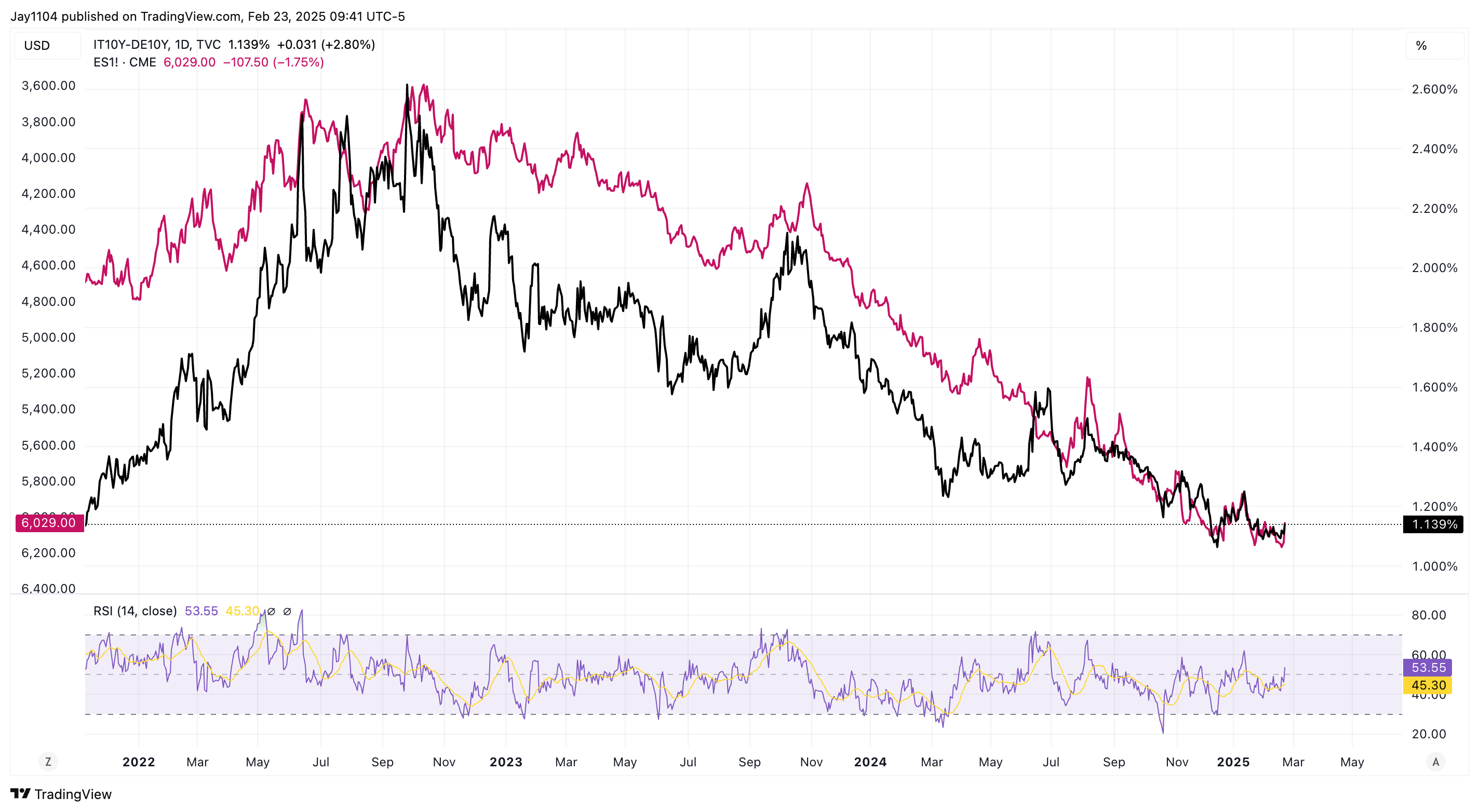
The identical applies to US Excessive-Yield credit score spreads and the Italian-German unfold. Based mostly on what I’ve learn, outcomes ought to begin popping out later this afternoon.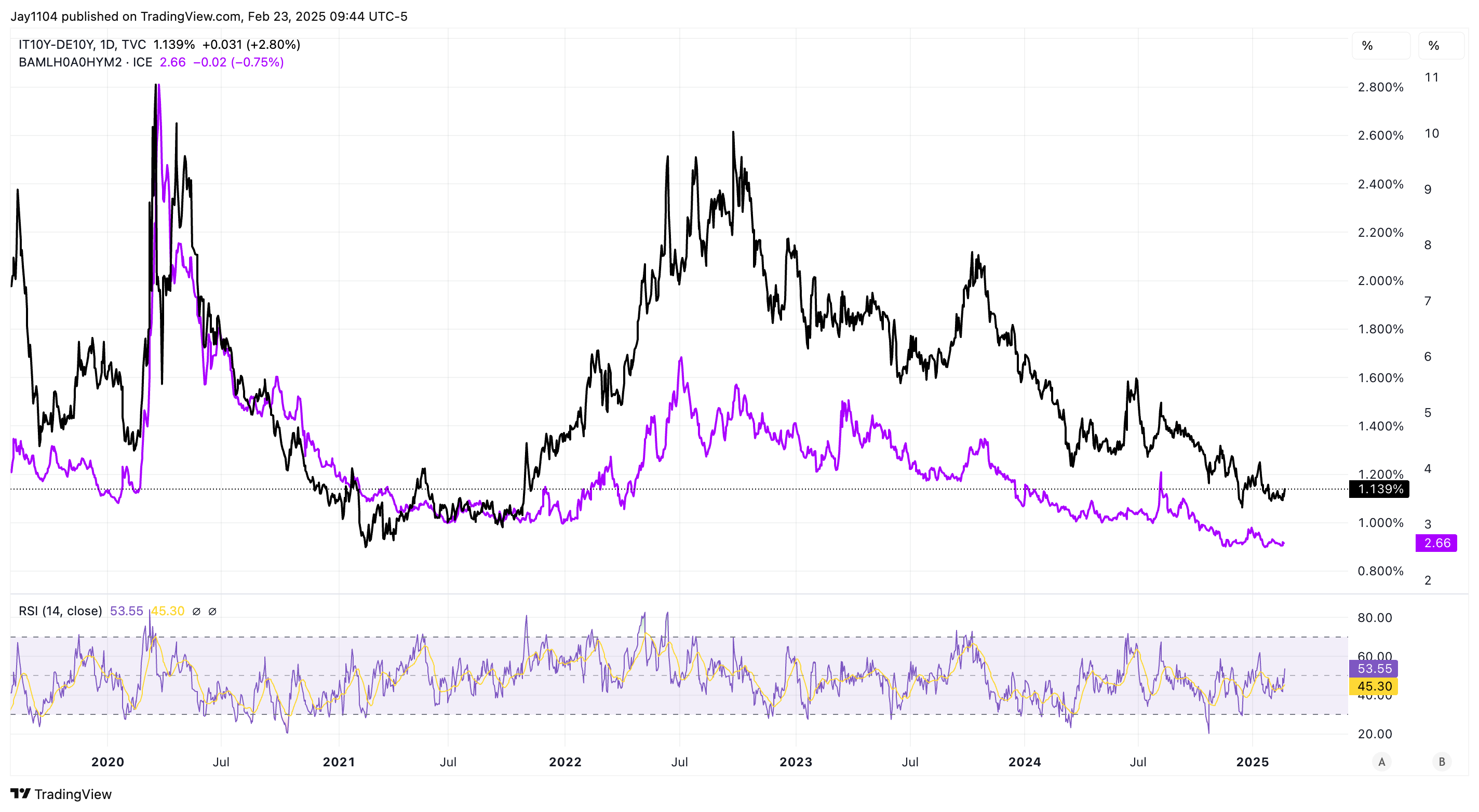
As for the , volatility will seemingly be elevated this week, with Nvidia’s outcomes on Wednesday and the PCE report on Friday. Moreover, Friday’s sell-off pushed the S&P 500 into detrimental gamma, with the zero gamma degree seemingly round 6,100. This implies market makers will probably be buying and selling within the path of the market.
Given the choices market positioning final week, I didn’t suppose the S&P 500 would see a major breakout. Nonetheless, there seems to be some room for upside early within the week following final week’s sell-off. The S&P 500 may attain 6,050 to six,060 if the VIX 1Day drops laborious on Monday and so long as assist at 6,000 holds. If assist breaks, we may transfer again to five,940 to five,950 or probably decrease.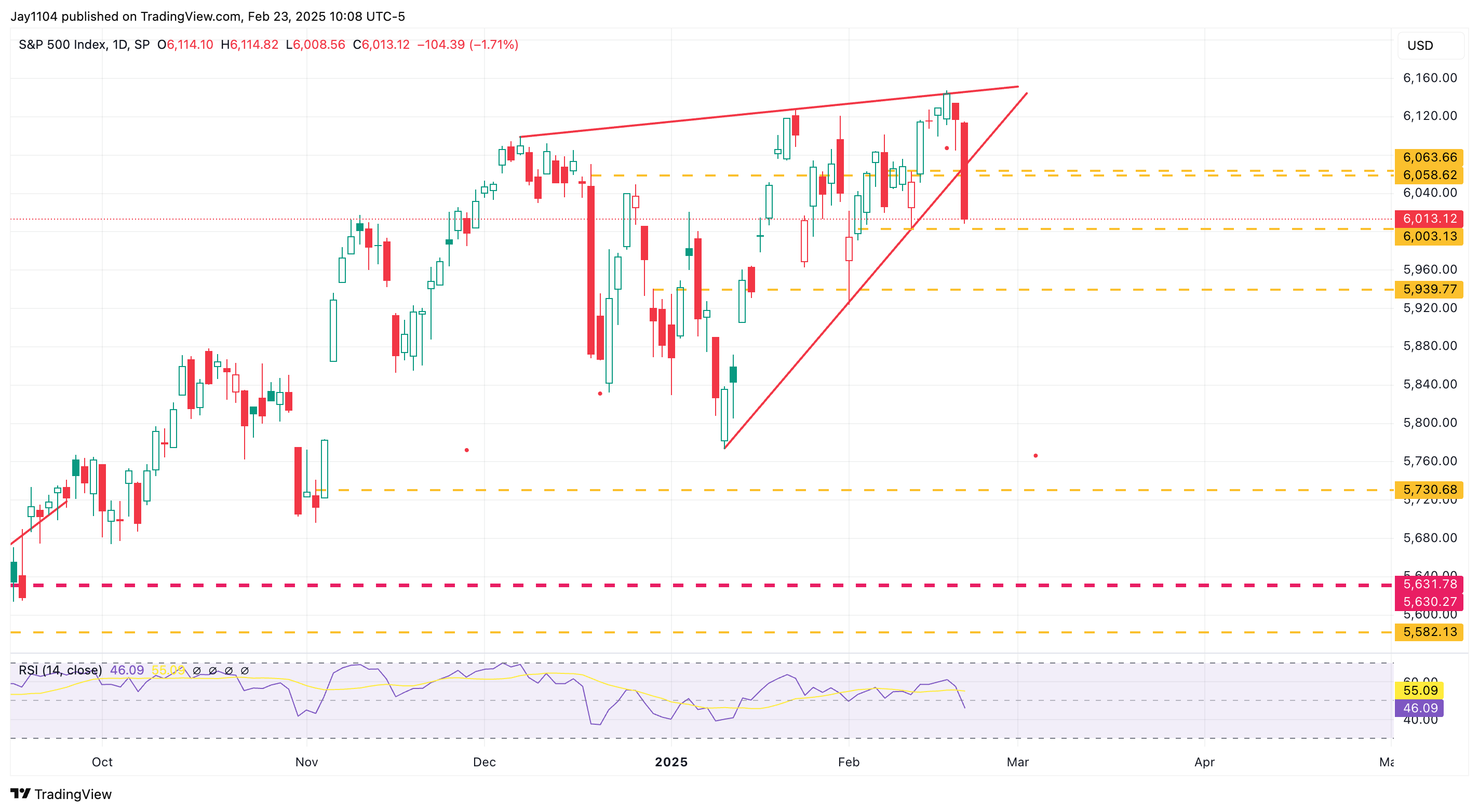
***
Phrases By ChatGPT
- 1. Unfavorable Gamma – A state of affairs the place market makers should commerce within the path of market actions, probably amplifying volatility.
- 2.Zero Gamma Degree – The purpose at which market makers’ hedging conduct shifts, affecting market dynamics.
- 3.2-12 months Inflation Swap – A spinoff contract used to hedge or speculate on inflation over a two-year interval.
- 4.61.8% Retracement Degree – A key Fibonacci retracement degree, usually utilized in technical evaluation to determine assist or resistance.
- 5.Margin Compression – When an organization’s prices rise quicker than its capability to move them on to shoppers, decreasing profitability.